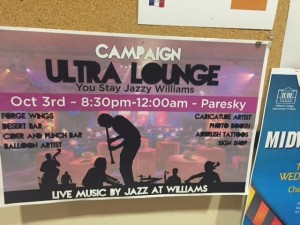Methodologies VI: Methodology Manifesto
Posted in Assignments on October 25th, 2015 by Arielle SteeleAfricana studies has the singular history of being a field that is both personal and academic. It is a field where possibility and malleability reign supreme. For students whose vocational education purposely and systematically excluded the histories, literature, and art of Africana peoples, Africana studies could serve as a second education, a (hopefully) diasporic family history. For students who have grown up in predominantly white spaces, Africana programs have the capacity to serve as a quest for a reimagined and realized black self. The field has transformative power as it is the reflection of self, the world, and it’s future. However it’s this mixture of the personal and academic that has proved to be both the field’s point of success and failure.
Like many of the scholars who pondered the future of Africana studies, I too feel that Africana studies, as I’ve experienced it, has focused excessively on deconstructing white supremacist and hegemonic thought and practice (Rabaka, Africana Critical Theory). For survey courses in the discipline this focus on deconstruction is not only important but also necessary. However, the study should move past this stasis. As students plunge deeper into the field, the focus should also deepen. I suggest that courses include the radical thought that is explored in black feminism and womanism, modern articles/videos/and or movements (digital or otherwise), or rarely called upon texts that complicate or reformulate daily black life.
Furthermore Africana study both in survey and major courses need to incorporate an international narrative. Here I do not mean a simple additive course of action that tokenizes Afro-Latino, Afro-European, and African thought (Higginbotham, Designing an Inclusive Curriculum). I mean an infusing of various scholars from these regions at the inception of Africana education. Because Africana studies is the intersection of the personal and the political, American institutions often have ignored or bypassed other texts because they see them as irrelevant to their national narrative. We must not only be cognizant of this failing but also realize that our experiences are a part of a larger dialogue. If Africana studies wishes to continue being the transformative field it is, it must implement this change. This would inhibit our theories from being too Americentric and would encourage future endeavors to truly encapsulate the African diaspora. It would also even cover the aforementioned point of finding new/radical thinkers instead of regurgitation of ‘classic texts’.
And we can’t stop there. As Africana is an interdisciplinary field, its reach should even extend to quantitative data. Similar to Psychological Statistics, an Africana Studies and Statistics course would teach not only the formulation of numbers but also the ways in which statistics are manipulated in various studies in relation to Africana peoples. The class would effectively prepare students to use this quantitative practice in future research, and further integrate Africana studies in other quantitatively drive fields.
Ultimately I’m calling for a breath of new life into the field. An understanding of the passage of time and shortcomings that feeds the future of Africana studies. We need to incorporate black women, international radical thought, quantitative study, digital media, sex and sexuality, and the arts as all necessary and integral subjects to this field. I’m calling for the cessation of additive education in favor of whole-hearted inclusion. For we are not where we were when Africana Studies began. We should no longer centralize white theory and black male radicalism in our work. As we are expanding our community our study should too. We must move past deconstruction in order to build lasting education for our youth.
Word count: 589
Works Cited
Higginbotham, Elizabeth. “Designing an Inclusive Curriculum: Bringing All Women Into the Core,” Words of Fire. Print. The New Press: New York, NY. 1995. 480
Rabaka, Reiland. “Africana Critical Theory: Overcoming the Aversion to New Theory and New Praxis in Africana Studies and Critical Social Theory”.
